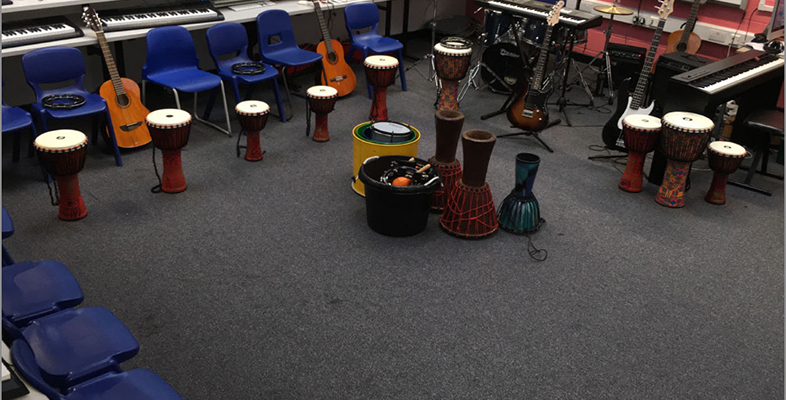Characteristic 1: Musical music lessons adopt an integrated and holistic approach
Integrated and holistic are understood in two ways here. Firstly, that music lessons in schools need to have cognisance of young people’s musical experiences and activities outside of school, or in a previous school, such as their primary school. These experiences should be integrated into what is planned in the music classroom, using them to develop young people’s musical understanding in ways that build on and extend these experiences.
Secondly, integrated and holistic refer to how the most musical lessons tend to be those that integrate the three main aspects of musical experience – listening to music; creating music; performing music – into common learning outcomes. This leads more readily to young people being immersed in music and, as Matthews says, reflects the way in which music is typically experienced outside of school:
even a cursory examination of the musical practices of most musical traditions and cultures reveals that there is often much blurring of lines between the activities of composing, listening and performing.
Matthews goes on to cite examples from jazz, African township music and hip hop to reinforce this point. Similarly, if you take part in a karaoke session you will naturally integrate these activities: you will listen to the backing track and compose/improvise the ‘on the hoof’ cover version of whatever it is that you ‘perform’.
Activity 11
Part 1
Watch the video clip Bugs, which is taken from a key stage 2 whole class instrument lesson and note how composing, listening and improvisation are integrated into this lesson.

Transcript
Bugs
[PIANO PLAYING]
[VIOLIN PLAYING]
Part 2
Imagine that you are teaching this class at the start of their first year at secondary school and you want to build on their experiences of this holistic and integrated approach to composing at primary school.
Think of a topic that you feel would build on the pupils’ experiences and provide opportunities for continuity and progression. Then, using either this lesson plan [Tip: hold Ctrl and click a link to open it in a new tab. (Hide tip)] or one of your own choosing, note down some broad headings for the lesson, including:
- the aims for the lesson
- the activities that will support these aims and which:
- integrate performing, listening and composing/improvising
- provide a suitable level of challenge and opportunities for progression for the class, knowing their experiences at primary level.
Return to this lesson plan and amend it after each of the subsequent ‘characteristics’ have been examined and the activity completed.
